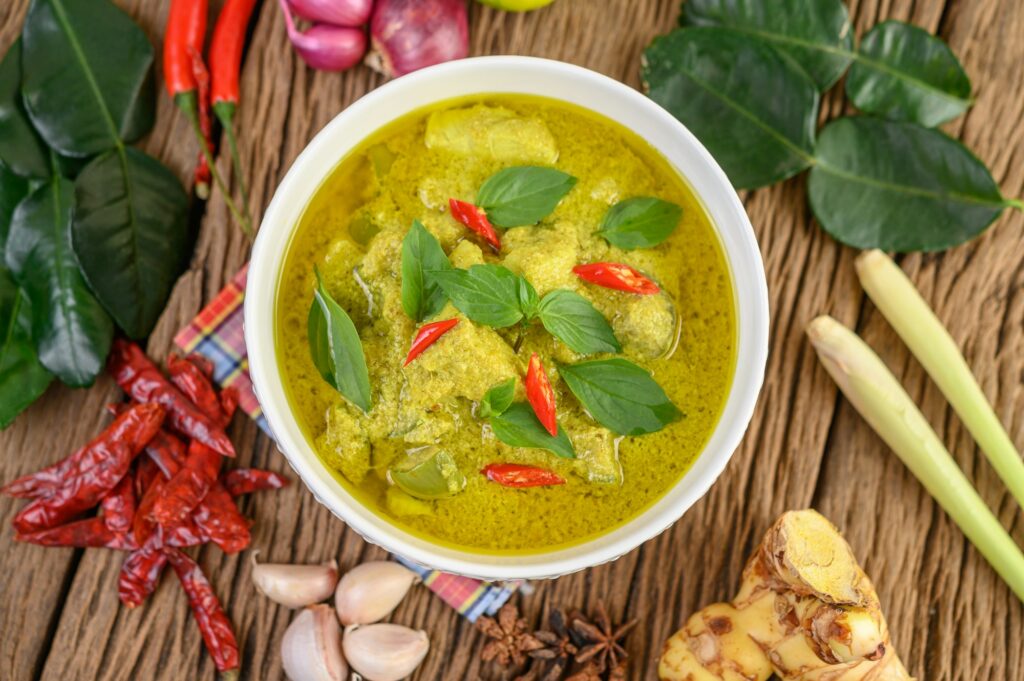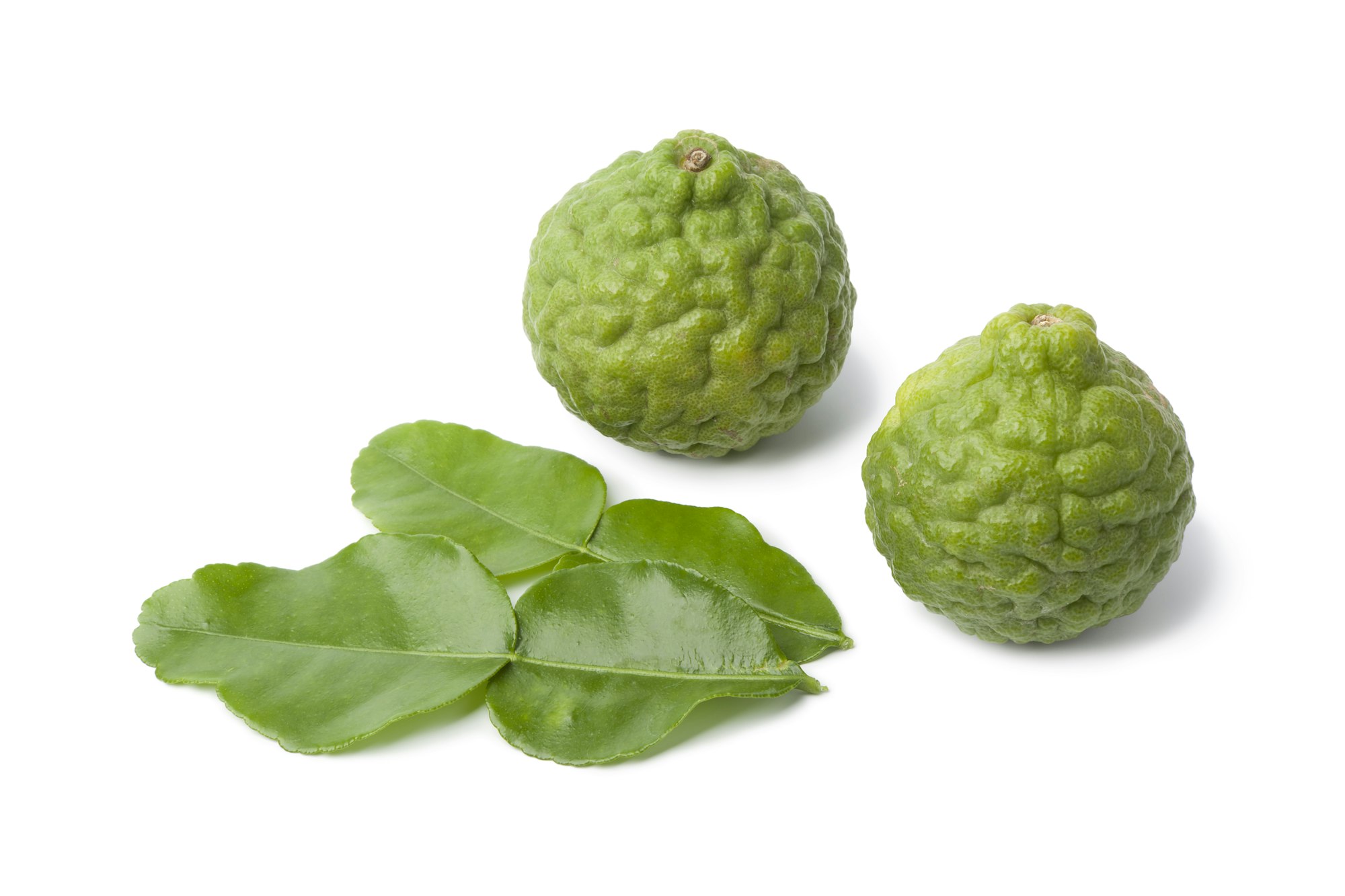The pictures in our articles might not always show exactly what the text is talking about. We use these images to make the article more interesting and eye-catching. They are there to add to the text, but not to replace it or show every detail.
Are you ready to embark on a flavorful journey through Southeast Asian cuisine? Let's dive into the world of kaffir lime leaves, a versatile ingredient that adds a burst of citrusy goodness to dishes. These aromatic leaves are more than just a culinary staple; they're packed with history, health benefits, and versatility that will surprise you!
In this post, we'll explore 15 fascinating facts about kaffir lime leaves that will transform your cooking and broaden your culinary horizons. From their ancient origins to modern-day uses, get ready to discover why these leaves are a must-have in your kitchen.
Key Takeaways:
- Kaffir lime leaves are an essential ingredient in Southeast Asian cuisine
- They offer unique flavor, aroma, and potential health benefits
- These versatile leaves can be used in various forms for cooking and beyond
1. Ancient Origins and Cultural Significance
Kaffir lime leaves have a rich history dating back to ancient Southeast Asia. These aromatic leaves were cherished not only for their culinary uses but also for their medicinal properties. In many Southeast Asian cultures, kaffir lime leaves hold significant importance in religious ceremonies and rituals, symbolizing good luck and prosperity.
2. Distinctive Double-Leaf Structure
One of the most unique features of kaffir lime leaves is their distinctive appearance. These glossy, dark green leaves have a double-leaf structure, resembling an hourglass shape. This characteristic sets them apart from other citrus leaves and makes them easily recognizable in the kitchen.
3. Intense Aromatic Profile
When it comes to aroma, kaffir lime leaves are in a league of their own. They possess an intense, citrusy fragrance that can instantly uplift your spirits and transform your dishes. The refreshing scent is a combination of lime, lemon, and subtle floral notes, making it a favorite among chefs and home cooks alike.
4. Essential Ingredient in Southeast Asian Cuisines

Kaffir lime leaves play a crucial role in various Southeast Asian cuisines, including Thai, Indonesian, Malaysian, and Cambodian. They are indispensable in dishes like Tom Yum soup, green curry, and rendang, adding depth and complexity to the flavor profile.
5. Versatile Culinary Applications
These aromatic leaves can be used in multiple ways in the kitchen:
- Whole leaves for infusing flavors
- Finely sliced for garnishing
- Dried and ground into a powder
- Infused in oils or vinegars
Their versatility makes them a valuable addition to any cook's pantry.
6. Fresh vs. Dried Leaves
While fresh kaffir lime leaves are preferred for their intense flavor, dried leaves can be a convenient alternative. Dried leaves have a longer shelf life and can be easily rehydrated before use. However, keep in mind that dried leaves may have a slightly milder flavor compared to fresh ones.
7. Potential Health Benefits
Kaffir lime leaves are not just about flavor; they also offer potential health benefits. Rich in antioxidants and essential oils, these leaves have been traditionally used to aid digestion, relieve cold symptoms, and reduce inflammation. While more research is needed, incorporating these leaves into your diet might contribute to overall well-being.
8. Natural Insect Repellent
Here's an interesting fact: kaffir lime leaves can serve as a natural insect repellent! In some Southeast Asian countries, people use the leaves to keep mosquitoes and other insects at bay. This eco-friendly solution is a testament to the diverse uses of this remarkable plant.
9. Beauty and Skincare Applications
Beyond the kitchen, kaffir lime leaves have found their way into beauty rituals. In some Southeast Asian countries, these leaves are believed to have cleansing and rejuvenating properties for the skin. From homemade face masks to hair treatments, kaffir lime leaves offer natural beauty solutions.
10. Flavor Infusion in Beverages
Kaffir lime leaves can add a zesty twist to your drinks. Try infusing them in teas, cocktails, or even water for a refreshing and aromatic beverage. Their unique flavor profile can elevate your drink game and impress your guests.
11. Complementary Flavors
These leaves pair exceptionally well with other Southeast Asian ingredients like lemongrass, ginger, and coconut milk. Understanding these flavor combinations can help you create balanced and authentic dishes.
12. Storage Tips for Longevity
To make the most of your kaffir lime leaves, proper storage is key. Here's how to keep them fresh:
- Refrigerate fresh leaves in a sealed plastic bag for up to a week
- Freeze leaves for long-term storage (up to 6 months)
- Store dried leaves in an airtight container in a cool, dark place
13. Sustainable Cultivation
Kaffir lime trees are relatively easy to grow and can be cultivated in pots, making them suitable for home gardens. Growing your own tree ensures a steady supply of fresh leaves and contributes to sustainable gardening practices.
14. Cultural Name Variations
The name "kaffir lime" has different variations across cultures. In Thailand, it's known as "makrut lime," while in Indonesia and Malaysia, it's called "jeruk purut" or "limau purut." Understanding these variations can be helpful when searching for recipes or ingredients in different regions.
15. Culinary Innovation and Fusion
As global cuisine continues to evolve, kaffir lime leaves are finding their way into fusion dishes and modern culinary creations. From kaffir lime-infused ice creams to innovative cocktails, chefs and mixologists are exploring new ways to incorporate this aromatic ingredient into their creations.
Conclusion: Embrace the Magic of Kaffir Lime Leaves
Kaffir lime leaves are more than just a culinary ingredient; they're a gateway to the rich flavors and traditions of Southeast Asian cuisine. From their unique aroma to their versatile applications, these leaves offer endless possibilities for culinary exploration and innovation.
Whether you're a seasoned chef or a curious home cook, incorporating kaffir lime leaves into your cooking can elevate your dishes and introduce you to a world of new flavors. So why not pick up some kaffir lime leaves on your next grocery run and start experimenting? Your taste buds will thank you!
FAQs About Kaffir Lime Leaves
What do kaffir lime leaves taste like?
Kaffir lime leaves have a unique citrusy flavor with hints of lemon, lime, and subtle floral notes.
Can I substitute kaffir lime leaves with regular lime leaves?
While not ideal, you can use lime zest as a substitute, but the flavor won't be exactly the same.
Are kaffir lime leaves edible?
Yes, but they're typically used for flavoring and removed before serving as they can be tough to chew.
Where can I buy kaffir lime leaves?
Look for them in Asian grocery stores, specialty spice shops, or online retailers.
Can I grow my own kaffir lime tree?
Yes, kaffir lime trees can be grown in pots and make great indoor or outdoor plants in suitable climates.
Remember, the key to mastering the use of kaffir lime leaves is experimentation. Don't be afraid to try them in different dishes and discover your favorite ways to incorporate this aromatic ingredient into your cooking. Happy culinary adventures!






